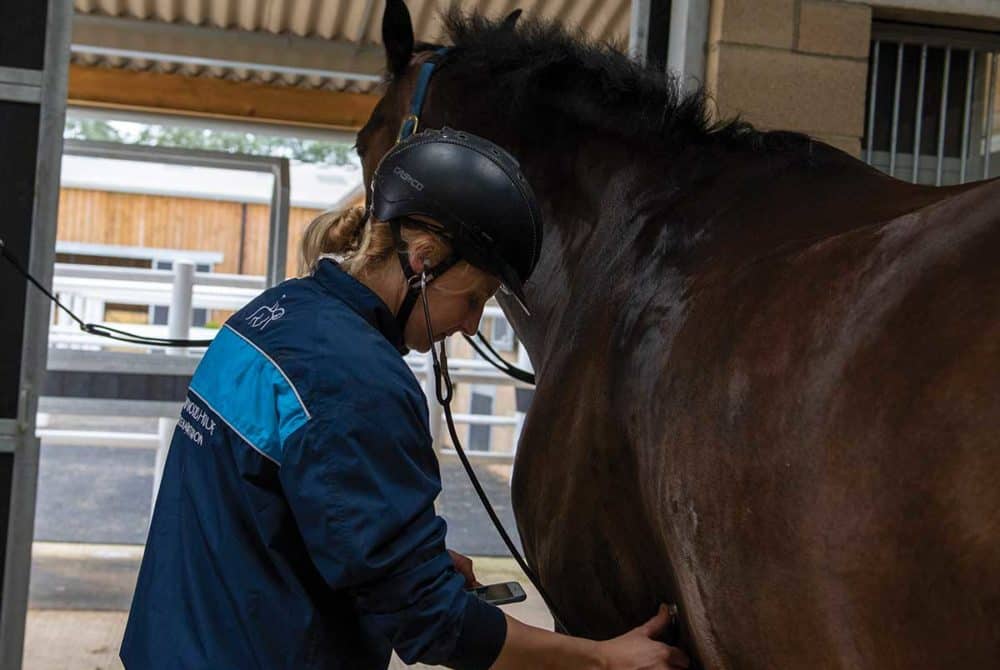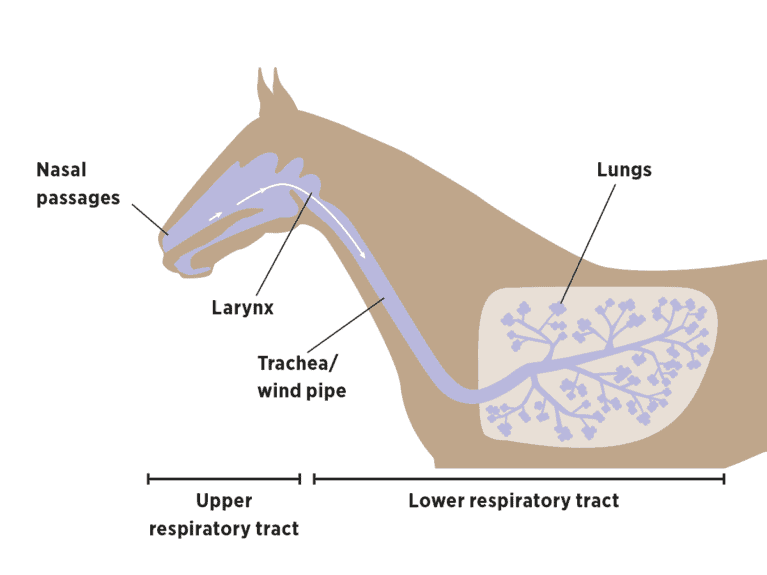Discover most common respiratory upsets with vet Colin Mitchell
Posted 6th October 2021
Winter’s the prime time for respiratory upsets – but are all the prime suspects seasonal? Let’s take a look at the most common problems with vet Colin Mitchell

One of winter’s biggest woes is the increased risk of breathing difficulties. While respiratory disease is common and can affect all horses at any time of the year, certain aspects of it become more prevalent in stabled horses during the winter due to the altered air hygiene.
Though air in the stable might not be able to rival the fresh and clean air of the great outdoors, there’s plenty you can do to improve your horse’s indoor environment. But what if the problem goes deeper than his surroundings – could you tell the difference between a dust-aggravated cough and a virus? Let’s take a look at some of the most common ailments and what you can do to prevent a breathing-related emergency.
Anatomy 101
The respiratory tract extends from your horse’s nostrils to his lungs. The tract from the nostrils to the larynx (the voice box in your horse’s throat) is referred to as the upper respiratory tract, whereas the lower respiratory tract refers to the structures from the larynx to the lungs.
The surfaces of the airways are lined with tiny hairs and a thin layer of mucus that traps small particles while the hairs sweep them towards the throat where they’re then harmlessly swallowed. This mechanism ensures that only clean, filtered air reaches the lungs and air sacs (or alveoli)

When the going gets tough
Problems arise when the sensitive mechanisms of the respiratory system are overcome. In broad terms, respiratory conditions can typically be split into four categories based on their cause…
- Fungus spores, which can trigger inflammatory airway conditions.
- Allergens and contaminants, including dust particles, smoke and noxious fumes.
- Bacterial, triggered by bacteria such as Streptococcus equi (which cause strangles).
- Viruses, such as equine herpes virus, and equine influenza.
Diagnosis
If you think your horse may be affected by a respiratory disease, stop ridden exercise and contact your vet, ensuring he has as much turnout as possible in the meantime. If you can, try to find out if there are other horses on your yard with similar signs. Make a note of your horse’s movement over the last two weeks – has he travelled to competitions, shared transport, been stabled at shows or been in a situation where he could have shared nose-to-nose contact with other horses? All the above will help your vet understand potential causes.
Your vet will want to examine your horse, using further diagnostic steps that might include a…
- throat swab to identify viral and bacterial causes in the earlier stages
- blood sample to look at your horse’s immune system by measuring white blood cell levels, or antibody levels to specific viruses or bacteria
- endoscope (narrow, flexible camera) to examine the airways and possibly take a sample of mucus from the airways (a tracheal wash)
- sample of mucus from the smaller airways within the lungs
- chest X-ray or ultrasound examination
Pick up your copy of December Horse&Rider, on sale 7 October 2021 for more information on the different types of respiratory issues and how you can look out for them










